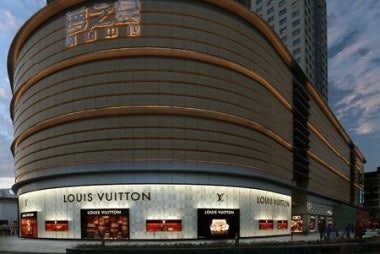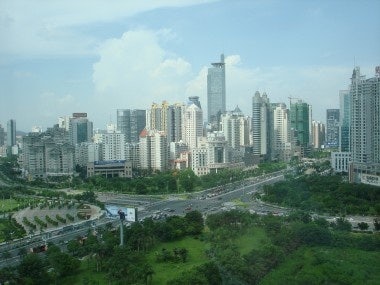More Than 40% Of Luxury Shoppers From Outside Nanning#

Nanning's first Louis Vuitton store, at Dream Island shopping mall
Jing Daily’s Second-Tier Spotlight” series looks at some of the key trends shaping China’s provincial capitals, often referred to as the country’s “second-tier” cities. Previously in the series, we’ve highlighted Xi’an’s surprisingly young luxury consumers, a “Goldfinger”-worthy publicity stunt in Changsha, jade fever in Qingdao, Shenyang’s love for second-hand shops, Kunming’s quiet emergence as a luxury brand magnet, Wuhan’s burgeoning obsession with golf, Ningbo’s “rich second generation” fueled luxury market, and Hefei's first luxury shopping center. Today, we turn to Nanning, capital city of southwest China's Guangxi Zhuang Autonomous Region, to look at a city whose luxury industry is so young, it's still celebrating the launch of its first Louis Vuitton store.
Often referred to as the "Green City," owing to its tropical climate and abundant foliage, Nanning, like many other provincial capitals, is fast becoming a magnet for some of the world's top luxury brands. Home to around 7 million, in recent years the capital of southern China's Guangxi Zhuang Autonomous Region has benefited from lucrative trade with nearby Vietnam and Thailand, as well as millions of tourists (both domestic and international) traveling through the city on their way to popular destinations like Guilin and Yangshuo. But despite huge economic growth over the last two decades, little has been said about Nanning's luxury market because, in essence, it never had one until December 17, 2010 -- when the city inaugurated its first Louis Vuitton store.
Interestingly enough, it seems that Nanning's luxury market hasn't exactly developed organically, but rather has been pushed along by Nanning officials embarrassed by the jeers of visiting ASEAN delegates and officials from other cities. As Xinhua recounts this week, a representative from Nanning's Dream Island shopping mall traveled to an Asia-Pacific retail convention last year in Taiwan, and was told by a commerce official from Xiamen that a proposed partnership between Nanning and Xiamen was impossible. Why? "Because," the Xiamen official flatly said, "Nanning doesn't even have an LV store."
While it may sound odd that a city would strive to develop its luxury market not simply because of demand, but also because of peer pressure, that's exactly what's happening in Nanning. The city did eventually get its first LV store, and since then malls like Dream Island have upped their game, trying to entice other top brands to set up shop. Apparently their overtures are working, as Ferragamo, Burberry, Armani and Tod's have opened points of sale or boutiques in Nanning over the last year. According to Dream Island reps, just as foreigners are drawn to Guangxi's natural beauty, people from nearby towns and cities like Guilin, Liuzhou, Dongxing and Pingxiang now see Nanning's LV store and high-end malls as tourist destinations in their own right. Preliminary stats from Dream Island indicate that the vast majority of shoppers travel by personal car, and that more than 40 percent of these cars sport license plates from outside of Nanning.

Nanning skyline
As Luo Sheng (罗胜), dean of Guangxi University of Finance, told Xinhua this week, the newer nature of the Nanning luxury market means newly renovated malls like Dream Island stand on par with their equivalents in places like Beijing. Said Luo, Dream Island "gives shoppers a high-quality shopping experience, and such a shopping environment is what high-end consumers [in Nanning] have been hoping for." So how about sales? According to Xinhua, the less brand-savvy nature of Nanning shoppers and those from more remote areas in Guangxi illustrates why luxury brands are now so eager to tap smaller second- and third-tier cities:
Recent reports [from Nanning] describe high-end consumers, particularly mine owners from places like Baise (百色) and Hechi (河池), spending up to 1 million yuan (US$157,400) on luxury goods in one go. One customer spent over 1 million yuan on a gold watch, shoes, belts, and two mobile phones worth more than 200,000 (US$31,500) yuan each. Some shoppers are very particular about having their entire outfit match, and as such "one-on-one" personal shopping services are becoming more common in Nanning.
One lady who requested a personal shopping assistant ended up spending more than 200,000 yuan on one outfit, with everything matching from head to toe.